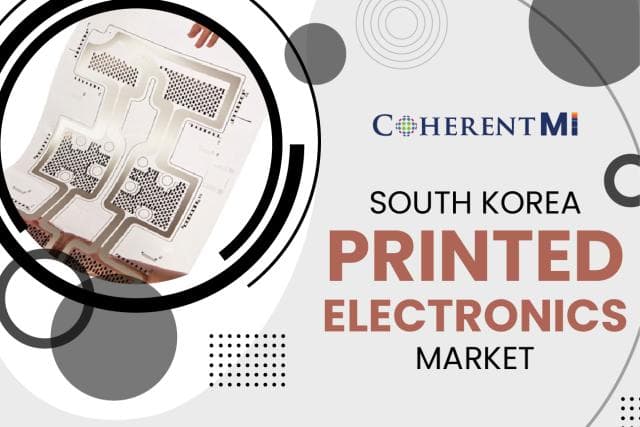Early Adoption and Government Support Fuel Growth
South Korea has emerged as an early leader in the development and adoption of printed electronics technologies. The country's electronics manufacturers were quick to realize the potential of these new technologies to transform existing product categories as well as enable entirely new applications. The Korean government has also played a critical role by establishing research centers, providing funding, and working closely with domestic companies to promote commercialization. As a result, South Korea now leads the world in several printed electronics segments such as flexible displays and photovoltaics.
One major reason for South Korea's prominence in printed electronics is the early adoption by its large electronics firms. Samsung, LG, and others saw printed electronics as a way to manufacture thinner and more flexible displays for smartphones and other consumer devices. This drove huge investments into developing new deposition processes for printing materials like organic light-emitting diodes (OLEDs) and their associated thin-film transistor (TFT) backplanes. Korean companies have since produced the world's first mass-manufactured flexible OLED displays and smartphones with foldable screens.
The government has strongly supported these private sector efforts through various R&D programs and initiatives. In 2008, the Ministry of Science and ICT established the Gwangju Center for Creative Economy and Innovation to conduct fundamental research into printed materials and processes. It has since grown into one of the largest printed electronics R&D hubs globally with over 500 researchers. Similarly, organizations like the Electronics and Telecommunications Research Institute (ETRI) focus on developing next-generation deposition and patterning techniques. The government has poured billions into these programs, recognizing printed electronics' potential to stimulate economic growth and create high-tech manufacturing jobs.
Photovoltaics Emerging as Major Segment
One area where South Korea is pulling ahead is in the development and commercialization of printed photovoltaic (PV) technologies. It now accounts for over 20% of the global printed PV market, second only to Germany. Major Korean players like Samsung SDI, LG Chem, and Doosan have installed large-scale production lines for manufacturing flexible solar modules. They utilize inkjet, gravure, and roll-to-roll coating processes to deposit photoactive inks made from materials like copper indium gallium selenide (CIGS) and organic polymers on plastic or stainless steel substrates.
This has allowed Korean companies to produce high-efficiency flexible PV modules at mass-production levels of millions of square meters per year. Applications range from building-integrated photovoltaics to powering the Internet of Things. The government aims to deploy over 1 GW of printed PV capacity nationwide by 2023. It is also providing incentives to install these modules on electric vehicle charging stations, transportation infrastructure, and in agricultural settings. Through economies of scale and continuous process improvements, Korean producers have managed to drive down manufacturing costs to around $0.50 per watt, nearing grid parity. Their technology leadership and low costs are helping them capture an outsized portion of the fast-growing global flexible PV market.
Flexible, Printable Sensors Enable New Applications
Leveraging their expertise in printing electronics, Korean firms are now applying these technologies to develop the next generation of flexible sensor platforms. Researchers at ETRI have produced prototype flexible sensors for strain, pressure, moisture, and temperature monitoring by inkjet printing silver nanowires on polymers. With applications in health, industrial IoT, and robotics, this opens up huge opportunities. For instance, flexible printed sensors could allow embedding basic health monitoring capabilities directly into wearable fabrics or bandages.
Companies have brought several of these sensor technologies to market. Hansol Technics manufactures washable printed temperature sensors on textiles for precision agriculture and logistics. ISU ABIST produces printable strain and pressure sensors for automotive tire pressure monitoring and precision manufacturing equipment.Perhaps most significantly, Samsung Advanced Institute of Technology is 3D printing entire sensor modules and arrays featuring piezoelectric, piezoresistive, and capacitive sensing elements. These can detect subtle vibration and movement patterns for next-gen human-machine interfaces, robotics, and smart homes.
Combining Flexible OLEDs and Sensors
By integrating their leading flexible display and sensor technologies, Korean firms aim to enable entirely new human-centered applications. For instance, Samsung unveiled a prototype interactive thermostat with a 3.5-inch flexible OLED screen printed with capacitive touch and temperature sensing components on a single plastic substrate. Users can simply touch, swipe or pinch different areas to control the device. LGDisplay has produced prototype flexible digital signage featuring integrated motion/proximity sensors to detect viewer presence for enhanced interactivity and energy savings.
Further advancing these concepts, the government-funded Gwangju project PRINTED is developing printable hybrid systems combining OLED pixel arrays, organic photodetectors, haptics, and various biometric sensors on flexible substrates. Researchers envision conformal smart bandages with integrated optical pulse oximetry, EKG, and thermography. Wearables could detect muscle activity through stretchable electronics laminated directly onto fabrics. Overall, by uniting their achievements in displays, printed electronics and flexible sensors, Korean organizations aim to usher in a new paradigm of human-centered “epidermal” electronics.
With continued investment and collaboration between government, academia and industry, South Korea is establishing itself as the global center of excellence for printed and flexible electronics. Its focus on commercialization while still pushing scientific boundaries isinspiring exciting applications in areas like displays, solar energy, and interactive systems. By leveraging strengths in manufacturing industries like electronics and chemicals, the country is demonstrating how advanced materials technologies can fuel new sectors and drive sustainable economic growth. South Korea's leadership will surely accelerate the worldwide development and adoption of these transformative printed technologies.
